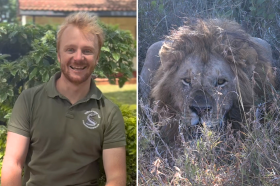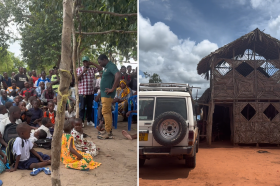'Impact' is a word we are all familiar with. We write impact reports for projects, there are impact sections in hopeful grant applications, and many of our career aspirations have the word impact sprinkled throughout. It gives us a feeling that what we are doing is making a difference. Somehow contributing toward change.
For such a commonly used term, defining ‘impact’ in conservation or restoration should be easy, right? No.
Despite the frequency with which we invoke the term, conservation still struggles to define and measure impact rigorously. We often rely on heuristics, correlations, and assumptions — not clear evidence that one thing caused another.
For all its faults, biodiversity finance has highlighted one big gap in conservation practice: a lack of consistent, causal thinking about impact. If we’re going to attract serious private capital, we need to demonstrate that our projects work. After all: no impact, no product to sell.
There is another question, of course, concerning ‘what is a single unit of nature’? But for now, just for fun, let’s assume that we agree on what we want to measure. The next challenge is this: how do we know if our project made a difference to the thing we care about?
Enter counterfactual, applying these methods isn’t easy. That awkward, jargon-y word that simply refers to methods that create an imagined scenario where your project didn’t happen to measure impact. In fact, applying these methods can be downright complicated — especially in the real-world complexity of conservation projects.
Even before a project begins, how and why we select study sites matters. Conservation tends to focus on the areas most in need — those facing acute threats or rapid degradation. This makes sense ethically and ecologically. But methodologically, it introduces a sampling bias that makes it harder to establish a credible comparison group. In other words, sensible site selection often comes at the cost of understanding impact.
If you’re seeing issues in the ability to apply rigorous evaluation methods to real-world conservation, you’re not alone. I, and others far smarter, worry about the same thing. We need more projects thinking more seriously about their impact — not perfectly, but better. Getting a little more robust can go a long way in lending real weight to our impact claims. This brings me to my project in Tanzania…
Working with an amazing local NGO — Lion Landscapes — my first portion of DPhil fieldwork set out to explore the effect of their conservation work to incentivise coexistence between humans and large carnivores (e.g. lions, leopards and hyena) — and, what may be driving this effect?
Lion Landscapes' community camera trap (CCT+) programme provides a suite of interventions to support their desired outcome. It offers mitigative support that reduces the risk of attacks from large predators (e.g. livestock protection), and a range of non-financial and financial incentives to prevent communities from attacking predators (e.g. payments for wildlife present in village areas).
Our question was simple: How was CCT+ incentivising people to live alongside large carnivores — and if it was being effective, what was driving that behaviour change?
Lion Landscapes’ CCT+ programme had been ethically targeted toward villages facing the highest risk of human–predator conflict, where the need was greatest and the potential for positive impact highest. This was an upstanding, sensible decision — the kind of choice any serious conservation initiative should make. But for us, as evaluators, it came at a cost: it threw traditional counterfactual methodologies out of the window.
Our first methodological blow. But we weren’t out.
After all, most conservation projects choose sites under similar conditions — guided by need, not by randomisation. If they didn’t, we’d be asking very different ethical questions. So instead of forcing a perfect evaluation model onto an imperfect world, we leaned into pragmatism.
We had one valuable asset: baseline data. A set of survey questions had been asked in CCT+ villages before the programme began. We used these same questions again — carefully adjusted for clarity and recall (e.g. Before Lion Landscapes arrived, did you...) — and compared them with current answers (e.g. In the past few months, have you...) to estimate the scope of change. To explore a causal link, we also asked participants directly: To what extent was this change due to CCT+?
To unpack what might be driving behaviour change, we turned to a well-established framework from the psychology literature: the Theory of Planned Behaviour. It offered a clear way to explore the attitudes, perceived norms, and sense of control shaping how people respond to large carnivores. It was also a good fit with Lion Landscapes’ own theory of change — CCT+ is, after all, a behaviour change intervention.
Using a well-cited psychological framework gave us a solid foundation for forming and statistically testing a few hypotheses about what might influence people’s decisions to live more harmoniously with large predators.
This felt — and still feels — like the best possible approach we, or anyone else, could take under these real-world conditions. After a series of focus groups to refine wording and ensure local relevance, we pressed go on survey data collection.
This data collection will wrap on Thursday 22nd May. By then, our rockstar team in Tanzania — Masai, Rose, and Levina — will have surveyed 601 participants across CCT+ villages. Responses are almost evenly split between pastoralist communities on the periphery and smallholder farmers in the village centre. These two groups lead very different lives, and we’re excited to explore how their experiences — and behaviours — diverge.
While I don’t yet know the results, one key outcome is already clear: we’re developing a pragmatic and transferable approach for understanding behaviour change where gold-standard statistical methods just aren’t feasible. Where there's no clear light, we've at least helped illuminate the path — and I’m already proud of that.
Stay tuned for the results. In a few months, I’ll have less hair — but a lot more to say.

